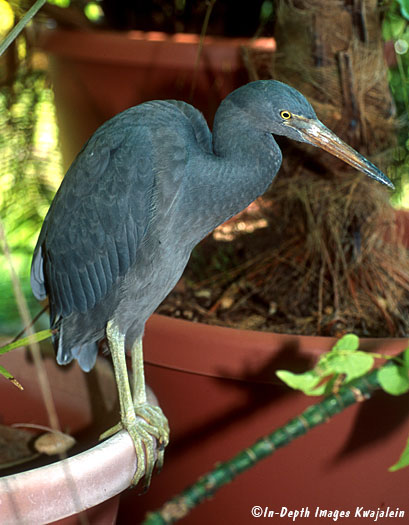
Looking out the window one day, I saw a neighborhood cat cringing away from something I could not quite see from my angle of view. I went outside and found the cat being stared down by a long billed, dark gray reef heron that while nearly full sized, was still partly covered with down, indicating it was not yet fully grown. The cat, possibly having been pecked by the long bill, retreated and the heron strolled from the edge of my house to the middle of the yard, where it stood and stared at me. It looked unable to fly--in fact, its wing feathers had been clipped--so I thought it might be hungry. Remembering there was a large blenny I'd been meaning to release that had been an accidental introduction to our outside aquarium, I caught it and offered it to the heron, who ran over and grabbed it out of my hand. Aha, hungry indeed. I found a net and bucket and went out on the reef, returning with a number of blennies, which the heron quickly devoured. With free food, the bird stayed in our yard and on our patio for a couple of months, until it regrew its flight feathers. The first part of the heron's stay required considerable effort and time spent on the reef to satisfy its ravenous appetite, but fortunately, we finally found the heron was perfectly agreeable to eating from a bowl chopped up squid purchased frozen by the box at our local food store. Later in the bird's stay, however, we did set up an artificial tidepool on our patio and stock it with reef fish so the bird could learn to fend for himself. Wondering where the bird came from and why its wings had been clipped led me to ask some Marshallese friends. One of them told me that on the outer islands, families often raise heron chicks. While they are growing, they help keep the chickens from coming into their houses, which are rather open to the outside. When fully grown, they are usually eaten. When our bird showed up, a quarter mile or so down the road, there was a Marshallese funeral ceremony going on. During these ceremonies, many families gather to pay their respects and spend several days talking and feasting. We figure someone must have brought this nearly full grown heron as an offering and he was probably intended to be part of the feast. But the clever and very lucky bird slipped away and ended up in our yard.

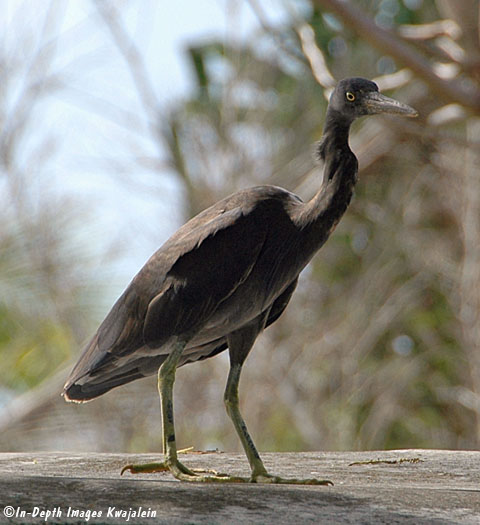
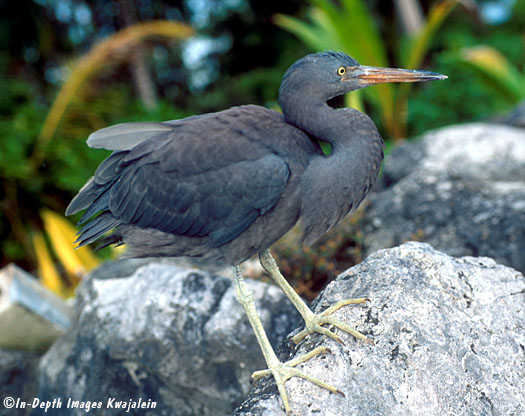
The heron knew where the fish were kept in an outside aquarium.
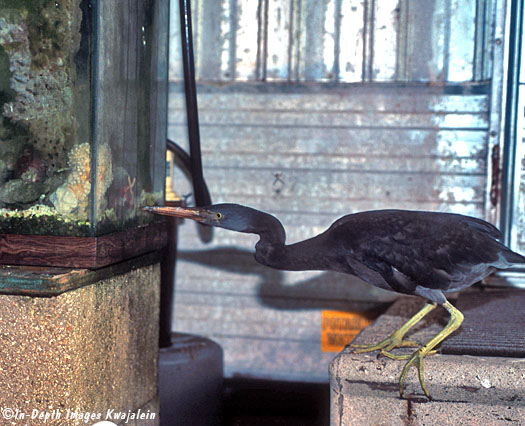
After a couple of months, the bird's wings had grown back and he was flying pretty well, although not yet perfectly. Since we were about to leave island on vacation and we were a bit worried that someone might try to grab the bird for dinner while we were gone (herons are a traditional food for Marshallese), we decided to repatriate him to an outer island. The bird had learned how to catch food from our fabricated tidepool, so we took him up to an island about 15 miles up the west reef, where there were extensive and rich tidepools on the lagoon side. We swam him ashore and released him, whereupon he flew up into a tree and surveyed his new territory. It may not have been completely to his liking, since after a few months he was back in our yard on Kwajalein. (He had a white patch under his chin not visible in any of these photos but which made him easy to recognize.) By that time, he was completely off on his own, but we would see him around the island periodically.
As recently as March. 2018, we suspect this bird is still hanging around Kwajalein. The photo below closely resembled our bird, right down to the white patch (not visible in this photo) right under the chin. The photographer, Christina Sylvester, said that unlike any other heron she'd ever seen, this one was rather tame, allowing her to come rather close, as if it had experience with people.
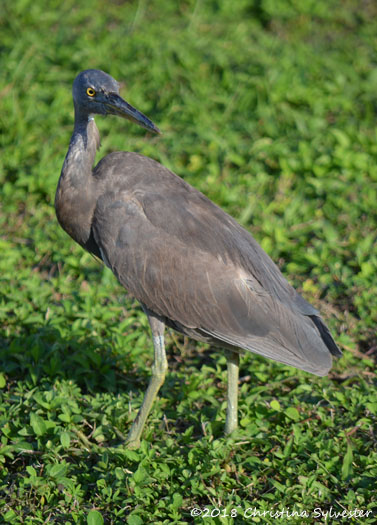
Created 25 January 2018
Updated 7 September 2018